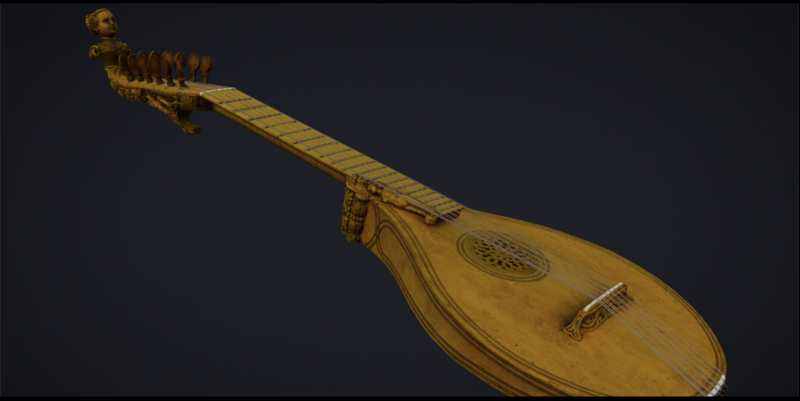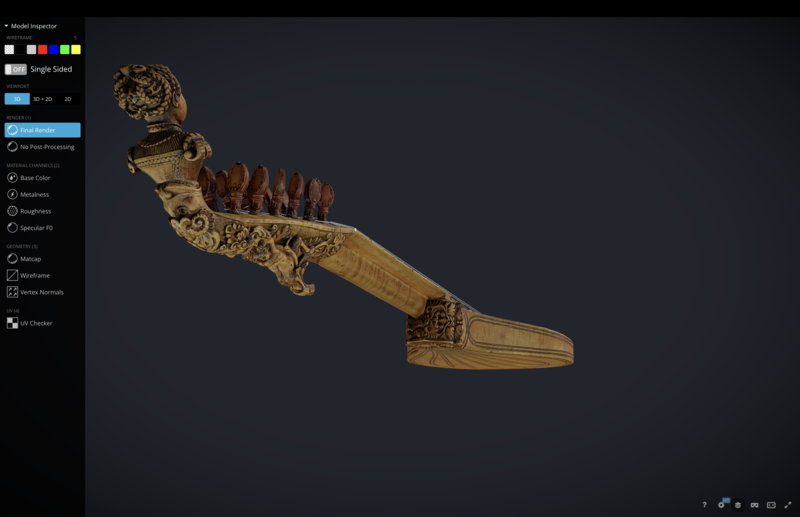Fantastic Musical Instruments of the Global Renaissance (Digital Humanities and Heritage)
Fantastic Musical Instruments of the Global Renaissance is a major interdisciplinary, international and cross-sector research project that combines digital humanities tools (3D photogrammetry, AR/VR) with material and archival analysis to examine the production, ornamentation, circulation, collection and display of early modern musical instruments. This project will attempt to situate musical instruments within their wider global constellations by tracing practices of decorating, making and collecting instruments in the early modern period, including examining the provenance of the materials used to make the instruments, and exploring their presence in early modern ‘cabinets of curiosities’ and other spaces of display, especially the built environment dedicated to music making activities and performances.
The 'fantastic', 'marvellous' and 'monstrous' were fundamental elements of early modern literature, art, music, and science. This fascination was expressed in musical instrument making through a range of forms, from the fashioning of animal bones into musical instruments, to the incorporation of monstrous figures within instrument ornamentation. Musical instruments of this period frequently feature masterfully carved figures, intricate geometric and arabesque patterns, expensive and exotic materials, and a variety of pictorial representations.


This project explores what these fantastic visual and material features say about the role that musical objects played in Renaissance social worlds. These elaborately decorated musical objects open windows onto questions concerning gender, race, knowledge and class. Their ornamentation also invites reflection on the circulation of aesthetic influences and raw materials beyond Europe, and the colonial and racial relations of Renaissance music within an interconnected global culture. This project thus embeds these musical instruments within larger global histories of manufacture, circulation, collection and display. Musical instruments were objects of exchange, possession, and performance. Entangled in cultural flows and commodity chains, these objects and the raw materials from which they were fashioned, moved through Renaissance worlds, articulating meaning, establishing relations, and signifying social status and cultural values as they did so.
‘Fantastic Musical Instruments of the Global Renaissance' is led by Dr Emanuela Vai (Worcester College, University of Oxford) as the Principal Investigator. The project has been funded by the British Academy and the EU Commission, and involves partnerships with a number of national and international stakeholders from the cultural heritage sector, including the Ashmolean Museum and the Bate Collection (University of Oxford), and the Research Institute for Digital and Cultural Heritage / Centre for Cultural Heritage Technology at Ca’ Foscari (Venice). This project builds on Dr Vai’s previous research, ‘Monstrous Materialities: Representations of the Grotesque on Scrolls and Headstocks of Italian Renaissance Stringed Instruments (14th-17th c.)’, that was carried out during her time as Hanna Kiel Fellow at Villa I Tatti, the Harvard Center for Italian Renaissance Studies (2018-2019).
Project Team
Principal Investigator: Dr Emanuela Vai (Head of Research, Worcester College and Bate Collection of Musical Instruments, University of Oxford)
Research Fellows: C. Zuaro, vacant
Creative Industries Partner: Steve Day (ThinkSee 3D)
Project Support Coordinator: E. E. Ashwin
Publications related to this project:
Vai, E., Fantastic Musical Instruments of the Global Renaissance: Cultures of Collecting and Practices of Performance (in preparation)
This project involves collaboration with a number of organisations, individual scholars and graduate students, including:





